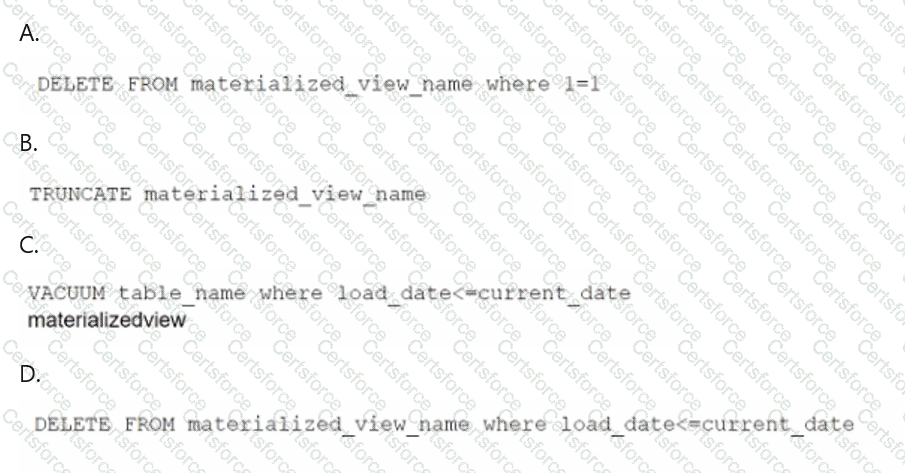The company stores a large volume of customer records in Amazon S3. To comply with regulations, the company must be able to access new customer records immediately for the first 30 days after the records are created. The company accesses records that are older than 30 days infrequently.
The company needs to cost-optimize its Amazon S3 storage.
Which solution will meet these requirements MOST cost-effectively?
A data engineer must orchestrate a data pipeline that consists of one AWS Lambda function and one AWS Glue job. The solution must integrate with AWS services.
Which solution will meet these requirements with the LEAST management overhead?
A data engineer has a one-time task to read data from objects that are in Apache Parquet format in an Amazon S3 bucket. The data engineer needs to query only one column of the data.
Which solution will meet these requirements with the LEAST operational overhead?
A data engineer maintains a materialized view that is based on an Amazon Redshift database. The view has a column named load_date that stores the date when each row was loaded.
The data engineer needs to reclaim database storage space by deleting all the rows from the materialized view.
Which command will reclaim the MOST database storage space?

A marketing company uses Amazon S3 to store marketing data. The company uses versioning in some buckets. The company runs several jobs to read and load data into the buckets.
To help cost-optimize its storage, the company wants to gather information about incomplete multipart uploads and outdated versions that are present in the S3 buckets.
Which solution will meet these requirements with the LEAST operational effort?
A company currently stores all of its data in Amazon S3 by using the S3 Standard storage class.
A data engineer examined data access patterns to identify trends. During the first 6 months, most data files are accessed several times each day. Between 6 months and 2 years, most data files are accessed once or twice each month. After 2 years, data files are accessed only once or twice each year.
The data engineer needs to use an S3 Lifecycle policy to develop new data storage rules. The new storage solution must continue to provide high availability.
Which solution will meet these requirements in the MOST cost-effective way?
A company uses AWS Step Functions to orchestrate a data pipeline. The pipeline consists of Amazon EMR jobs that ingest data from data sources and store the data in an Amazon S3 bucket. The pipeline also includes EMR jobs that load the data to Amazon Redshift.
The company's cloud infrastructure team manually built a Step Functions state machine. The cloud infrastructure team launched an EMR cluster into a VPC to support the EMR jobs. However, the deployed Step Functions state machine is not able to run the EMR jobs.
Which combination of steps should the company take to identify the reason the Step Functions state machine is not able to run the EMR jobs? (Choose two.)
A company uses Amazon Athena to run SQL queries for extract, transform, and load (ETL) tasks by using Create Table As Select (CTAS). The company must use Apache Spark instead of SQL to generate analytics.
Which solution will give the company the ability to use Spark to access Athena?
A technology company currently uses Amazon Kinesis Data Streams to collect log data in real time. The company wants to use Amazon Redshift for downstream real-time queries and to enrich the log data.
Which solution will ingest data into Amazon Redshift with the LEAST operational overhead?
A company runs multiple applications on AWS. The company configured each application to output logs. The company wants to query and visualize the application logs in near real time.
Which solution will meet these requirements?